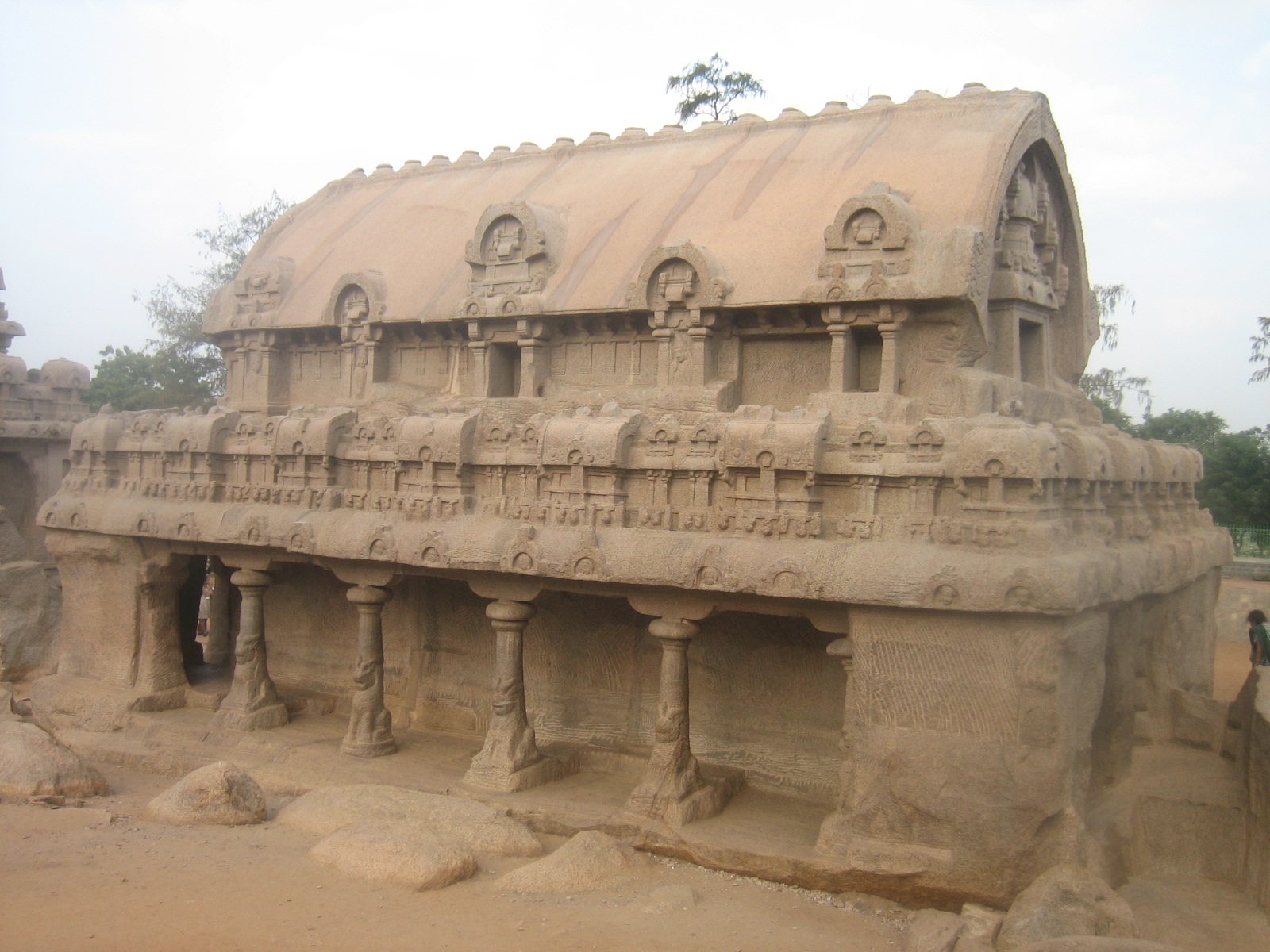Mamallapuram – The Workshop of the Pallavas
Bhima Ratha


This is the third ratha from north in the Pancha Ratha complex. It is aptly named Bhima Ratha for its bulky and large appearance. It differs in its design and architecture from its two previously described cousins, Draupadi and Arjuna ratha. It has a rectangular sanctum topped with an oblong or wagon-vault roof with gable ends. The roof design has led scholars to suggest that its resemblances and inheritance from early Buddhist cave-shrines. This dvi-tala (two storeys) ratha measures 42 feet long, 25 feet wide and 25 feet high.

Like other monuments at Mamallapuram, this ratha is also left incomplete. The larger sides, in the west and the east, have four pillars and two pilasters. These have seated-lion bases carrying round and tapering shaft above. A bulbous cushion forms the capital of the shaft above which runs its cornice connected to a beam through vira-kantha. Kapota (cornice) on the front facade carries kudu-arches (dormer windows) with a peeping head inside. The roof is decorated with interconnected shrines, five sala (oblong) and two corner kuta (square) shrines on the larger side while three sala and two kuta on the smaller side.

The second story is a disjoint construction, a complete shrine in itself, as its roof does not superimpose over the sala-kuta shrine decoration of the first storey. This shrine is constructed leaving a recess or circumambulatory path around it. It is also a rectangular or oblong structure with a vaulted roof on top. The larger sides are pancha-ratha, with five niches. The corner karna and central bhadra niches are in form of a full shrine or aedicule with a cornice and superstructure with its gable ends in front profile. The other two niches are also in form of a shrine, but without a cornice and griva, as the superstructure is directly imposed on the beam above the pillars. The middle niches might have served as an entrance into the shrine.
The vaulted roof is a curvilinear slopping structure with a ridge in the middle. This ridge is decorated with eighteen stupis, left with only bases. Probably these stupis were carved separately and installed during consecration of the temple as evident from the stupis of Draupadi and Arjuna ratha found lying near their platform. This would have been appropriate as these monoliths are carved in top-down fashion which would require carving the stupi first and thus violating the consecration process.
The gable ends of the roof are most interesting part of the shrine. The ends are in form of a chaitya arch. Six projecting brackets, three on each side, signify the ends of rafters, inserted to support the arch. These rafters suggest that the design of this building is influenced from similar structures designed and constructed in wood. Within this gable arch is carved a square shrine topped with a circular shikhara. The circular shikhara puts the shrine in vesara architectural style according to south Indian agamas, though these agamas are of late origin. These gables ends would have been adorned with trishula (trident) motif, as found on the Ganesha Ratha.
With the arrangements of pillars on all sides, a circumambulatory path was conceived, thus putting this temple in category of sandhara shrines. The circumambulatory path is open in all the directions except at the corners. This arrangement of pillars on all sides leaves a rectangular sanctum in middle which was designed to be entered through west. This kind of oblong sanctum is usually constructed to enshrine images of Sapta-matrikas or Anantasayana Vishnu. Beck1 mentions that it was meant to house Anantasayana image as outlines of this image are visible.
1 Beck, Elisabeth. Pallava Rock Architecture & Sculpture. East West Books. Madras. ISBN 8188661465

